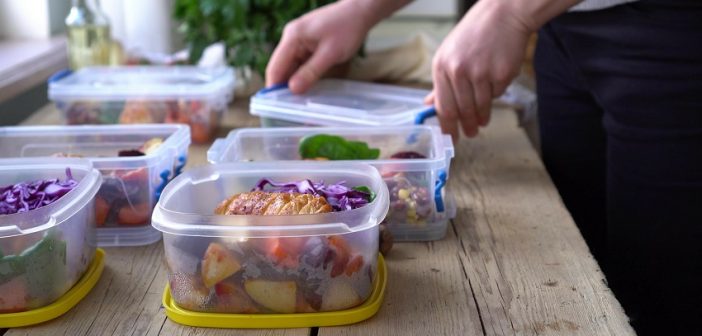In 2019, the average US consumer spent a staggering $8,169 on food alone. Over 40% of that, amounting to $3,526, went toward food away from home.
That’s a lot of money that they could’ve otherwise saved much of if they prepped and cooked more meals at home. Meal prepping also allows people to eat healthier, as they can control what goes into their food.
Besides, preparing your meals beforehand doesn’t have to be a messy, complex endeavor. So long as you do it right, you’ll find yourself making fewer trips to the grocery store or the market.
To that end, we created this meal prep guide to help budding home chefs out there get started. Read on so that you can start preparing healthier, more cost-effective meals at home.
1. Always Check What’s On Hand
The first most important piece of meal prep advice is always to take a kitchen inventory. Raid your pantry, fridge, freezer, and other food storage areas to see what stuff you have. Make a list of the available food items and ingredients and jot down their quantities.
Doing all that gives you a clearer picture of the meals you can prep without having to run to the grocery. It also helps prevent you from buying too much and overstocking items. You might even have enough ingredients on hand to last you for a week.
2. Factor in the Size of Your Fridge
As you raid your fridge, check how much space is still available in it. Next, factor in how much space you can free up once you take out the ingredients you’ll prep. Add this together to come up with an estimate of how many containers of prepped meal you can store in the fridge.
3. Go For High-Quality Food Containers
Food storage containers with tight lids and seals are key components of meal prep. Without these, you might end up wasting a lot of good food if they spill out or get tainted in the fridge.
So, check the available containers you have even before you start prepping your meals. Then, classify them based on their intended use, such as if you can freeze them or if they’re microwavable. Some types of glass containers are even safe to use on the stovetop or in the oven.
4. Apply the FIFO Concept
The food industry relies on the “first-in-first-out” (FIFO) system for food safety. FIFO involves consuming or using older food items before those that will expire at a later date. It prevents food spoilage, wastage, and the health effects of ingesting spoiled food.
All that makes FIFO a great concept that you should apply when you meal prep. This way, you can lower your household’s risk of food-related illnesses. It also helps you stay on track with your goals of reducing food waste.
5. Create a Short List
The tips above will give you an idea of what meals you can prepare. However, as someone new to meal prepping, you’d want to start with only a few days’ worth of prepped dishes. This is even more important if you’re going to prepare meals for more than just yourself.
Meal prep saves you time in the long run, but it would still take time since you’re preparing a few meals in one go. You might get overwhelmed if you chop bowls and bowls of ingredients without a break. You can start with a list of, say, two types each of breakfast, lunch, snacks, and dinner.
6. Use Ingredients That Are Easy To Diversify
Aside from being a time-saver, another key benefit of meal prep is that it gives you a quick meal to feast on. When you’re hungry, you only need to take a prepped meal out of the fridge, pop it in the oven, and end up satiated. What’s more, these benefits also help keep you from relying too much on fast food each time you need a quick meal.
The only drawback is that you might get tired of eating the same dish twice or thrice in a row. This is why you should also add some variation to your prepped meals.
Look at your inventory list and think of recipes that allow you to put what’s on hand to good use. Even if you only have frozen chicken, there are more than 80 ways to turn it into a satisfying meal.
What’s more, many of these recipes have similar ingredients and preparation methods.
For example, some require broiled or grilled chicken, garlic, onions, herbs, or spices. However, they have distinct sauces, broths, and cooking methods that make them different. So, even if you pre-assemble them in the same way, they would still make different meals.
7. Pair Meals With Different Carbohydrate Sources
As you create your meal prep plan, choose dishes that work well with whole-wheat bread, rice, and pasta. For instance, chili is excellent with whole-wheat tortillas, brown rice, or baked mac. Another example is a base of ground meat for patties, which you can then eat as a burger or with rice.
8. Stock up on Stocks and Sauces
You can make larger batches of stocks and broths, put them in a few containers, and then freeze them. It’s okay to freeze tomato sauce, while you can make velouté and Espagnole sauce with stocks.
You want to have these liquids on hand as they can make a big difference in creating variety in your prepped meals. After all, they are the starting point of countless dishes, from veggies to seafood and meat to pasta.
Have Fun Meal Prepping With These Tips and Tricks
As you can see, there are countless ways to make meal prepping a simple and fun activity. Just remember that it all starts with raiding your food storage areas. This way, you can maximize what you already have and avoid making unnecessary trips to the store.
Interested in more ways to whip up delish but healthy dishes and beverages at home? Then please feel free to check out our other food and drink guides and recipes!




